I have made a living, more or less, as a writer for 30 years, mostly as the editor of this publication and sometimes as a freelancer for others. I believe in the dissemination of information, wherever the facts may lead. I believe in open and honest discussions of ideas and opinions, no matter how uncomfortable or offensive those ideas might seem, to me and to others.
I believe in the pursuit of knowledge, whatever course that effort might require. And I believe in the need to remember and understand history—the good, the bad and the ugly. I abhor censorship of any kind, even when opposing censorship challenges or threatens my own set of beliefs. And most importantly—even when I firmly believe the views being censored are dead wrong.
For decades I was sure that to live by such a code represented a “progressive” perspective. But something is changing in “liberal America,” and it’s disturbing.
This kind of blacklisting has manifested itself in a variety of ways. Liberal leaning universities are banning or cancelling guest lecturers who might espouse conservative viewpoints. Controversial conservative pundits like Anne Coulter and Milo Yiannopoulos set off riots in Berkeley and subsequent cancellation of those appearances. At the University of Montana the dean of its School of Journalism recently refused to allow a conservative writer to host an annual lecture.
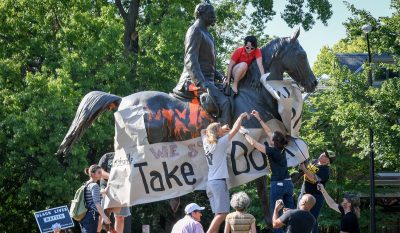 Blacklisting history itself has taken center stage as the recent push to remove Confederate statues gained extraordinary momentum and expanded its reach. Statuary came down across the South, defenders of the monuments were labeled bigots and racists, protests turned into riots, more statues were vandalized or destroyed and the ‘movement’ grew to include other venues and targets.
Blacklisting history itself has taken center stage as the recent push to remove Confederate statues gained extraordinary momentum and expanded its reach. Statuary came down across the South, defenders of the monuments were labeled bigots and racists, protests turned into riots, more statues were vandalized or destroyed and the ‘movement’ grew to include other venues and targets.
An annual showing in Memphis of the 1939 Academy Award film, “Gone with the Wind,” was canceled when the Orpheum Theatre explained that it could not “show a film that is insensitive to a large segment of its local population.”
The mascot for the University of Southern California, a white Arabian horse named Traveler, was deemed offensive and racist. The horse resembled Robert E. Lee’s horse, Traveller (with two ‘l’s).
A plaque depicting George Washington and Robert E Lee, at the church where both attended, over two centuries ago, will be removed. Church leaders explained that the plaque “makes some in our presence feel unsafe or unwelcome.”
In North Carolina, a school removed a “student art piece” about the Civil War that featured Abraham Lincoln because it also contained a likeness of Confederacy President Jefferson Davis.
Has all this political correctness and revisionist history gone too far? Maybe it hasn’t gone far enough. Maybe it’s time to stop memorializing history once and for all. If the Confederate generals deserve to be erased, who else is worthy of elimination? If nothing else, cleansers of the public square must be consistent to avoid the accusation of “hypocrisy.”
Consider the Confederate statues that are under fire. The most popular target, General Robert E. Lee, was a professional military man, educated at West Point, fought under the Stars and Stripes in the Mexican War and until the Spring of 1861, never dreamed he’d be at war with his own classmates.
The Virginia born Lee was already an accomplished and highly regarded officer when Secession came. He was so respected that President Lincoln summoned him to the White House and offered Lee command of all Union armies. At the time, Lee’s wife owned slaves and while Lee was ambivalent about the topic, there is no indication that Lincoln demanded any kind of denouncement before seeking his help. Lee, of course, declined because he believed he could not “fight against (his) own country”–Virginia.
BUT WHAT ABOUT THE ‘GOOD GUYS?’
Ok. But what about the “other side?” What is the conventional wisdom regarding the military leaders of the Union Army—Grant? Sherman? Sheridan? The ones that defeated the Confederates and its now erased leaders? The ones who allegedly fought to free the slaves and restore the country’s moral center?
Social media has heaped particular praise on William Tecumseh Sherman, noting that it was his military campaign in Georgia and Sherman’s “March to the Sea” that truly broke the back of the Confederacy and brought an end to slavery.
In fact, his “March to the Sea,” from Atlanta to Savannah is the first time in American history where a military strategy specifically called for the general destruction of non-military property and the suffering and death of the enemy’s civilian population. Today it’s called “scorched earth warfare,” or “total war.” Later, Sherman himself noted that about a fifth of the damage his army inflicted served a military purpose. “The remainder,” Sherman said, “is simple waste and destruction.”
General Ulyssus S. Grant, commander of the Army of the Potomac, General Phillip Sheridan, and Sherman received accolades for their victories against the South. But while these Union military leaders get a pass from today’s progressives, how do they feel about these same men’s treatment of Native Americans in the decade that followed?
As president and at best, Grant hoped that Indians would give up their nomadic ways as hunter gatherers, farm small plots of land (so the vast remaining acreages could be made available to the Whites, and become good Christians. The experiment lasted a few years, Grant gave up and ordered the tribes onto their respective reservations.
Enforcing his edict were his friends and subordinates from a few years earlier—Sherman and Sheridan. Both men were instrumental in driving the Indians into submission. A Native American once introduced himself to General Sheridan, telling him he was a “good Indian.” And it was the diminutive general who replied, “The only good Indians I ever saw were dead.”
Sherman, unable to repeat his victories against the South, and outwitted again and again by the Great Plains tribes, deduced that the best way to eradicate the Indians was the exterminate their food source. It was Sherman’s plan, though never official, to encourage buffalo killing on a scale never imagined in human history. Sherman said:
“These men have done more in the last two years, and will do more in the next year, to settle the vexed Indian question, than the entire regular army has done in the last forty years…let them kill, skin and sell until the buffaloes are exterminated. Then your prairies can be covered with speckled cattle.”
Clearly, Sherman, Grant and Sheridan need to be erased. Down with the monuments and the paintings. We will no longer mention the Sherman tank. Change the name of Sheridan Wyoming to something more palatable. Chisel the name from the granite and let the future really wonder who’s buried in Grant’s tomb. We will hear their names no more.
And what of Lincoln himself? Lincoln, the Great Emancipator, abhorred slavery but never thought Black people could measure up to his race. He said:
“I am not, nor ever have been, in favor of bringing about in any way the social and political equality of the white and black races … I am not nor ever have been in favor of making voters or jurors of Negroes, nor of qualifying them to hold office, nor to intermarry with white people; and I will say in addition to this that there is a physical difference between the white and black races which I believe will forever forbid the two races from living together on terms of social and political equality. And inasmuch as they cannot so live, while they do remain together there must be a position of superior and inferior, and I as much as any other man am in favor of having the superior position assigned to the white race.”
Well into his presidency, Lincoln believed that the best long term solution to the race issue was to move the freed slaves off the continent altogether and give them their own country, to live as they pleased, perhaps on some island in the Caribbean.
Lincoln also approved the largest mass execution in American history when he allowed the hanging of 38
Dakota Indians in Mankato, Minnesota in 1862. That same year, he approved the Homestead Act and the Transcontinental Railroad. The massive projects did more to destroy the Native American way of life in North America than any other law in American history. And Lincoln knew it. Everything that his generals would do in the next decade came as a result.
The near annihilation of Native American culture and near extermination of the buffalo was precipitated by Lincoln. And so, to be consistent, we must demand—No More Lincoln. No more Lincoln Memorial or the Lincoln penny. No more “Presidents Day.” Perhaps we can replace it with “Bad Presidents Day” so people can still get a paid holiday.
Should we keep going? What about those Americans that so many good western progressive environmentalists praise as heroes for their cause and movement?
Consider John Wesley Powell, first man to navigate the Colorado River through the Grand Canyon and first president of the Smithsonian Institute. The great scientist and explorer. In his recent Zephyr article, author Harvey Leake wrote:
Although the Bureau of Ethnology filled their voluminous annual reports with scholarly descriptions of the cultures of various Native American tribes, they included little to suggest that the authors believed that insights gained from their studies could help enlighten modern society. In one of those reports, John Wesley Powell explained the reason for the Bureau’s existence. “The immediate purpose in instituting these researches and in organizing the Bureau in 1879 was the discovery of the relations among the native American tribes, to the end that amicable groups might be gathered on reservations,” he wrote.
In (John Wesley Powell’s) articles, ‘From Savagery to Barbarism’ and ‘From Barbarism to Civilization,’ he argued that civilized society is not only intellectually superior, but morally superior as well. ‘In savagery, the beasts are gods; in barbarism, the gods are men; in civilization, men are as gods, knowing good from evil,’ he asserted.”
Farewell John Wesley Powell. What should we call the lake now?
What about Teddy Roosevelt? The first “progressive” president. The first conservation president. What did TR have to say about Native Americans?
Recalling General Sheridan’s admonition about deceased Native Americans, Roosevelt wrote, “I don’t go so far as to think that the only good Indians are dead Indians, but I believe nine out of ten are, and I shouldn’t like to inquire too closely into the case of the tenth.”
He had little confidence in the industriousness of Native Americans and in 1914 wrote, “Criminals should be sterilized and feeble-minded persons forbidden to leave offspring behind them.”
Away with TR…banished.
One of Teddy Roosevelt’s strongest allies in the conservation movement was the first environmental activist and founder of the Sierra Club, John Muir. In a 2015 ‘New Yorker’ article titled, “Environmentalism’s Racist History,” Jedediah Purdy wrote:
“Muir, who felt fraternity with four-legged ‘animal people’ and even plants, was at best ambivalent about human brotherhood. Describing a thousand-mile walk from the Upper Midwest to the Gulf of Mexico, he reported the laziness of ‘Sambos.’ Later he lamented the ‘dirty and irregular life’ of Indians in the Merced River valley, near Yosemite. In ‘Our National Parks,’ a 1901 essay collection written to promote parks tourism, he assured readers that, ‘As to Indians, most of them are dead or civilized into useless innocence.’ This might have been incisive irony, but in the same paragraph Muir was more concerned with human perfidy toward bears (‘Poor fellows, they have been poisoned, trapped, and shot at until they have lost confidence in brother man.’) than with how Native Americans had been killed and driven from their homes.”
Goodbye John Muir.
Jump ahead a couple of decades to TR’s nephew and the most revered liberal of the 20th Century. Franklin D. Roosevelt. Many Americans believe FDR saved the country from anarchy and that the provisions of his New Deal programs during the depths of the Great Depression gave the country the will to live. But most of those New Deal programs explicitly discriminated against African Americans. And it was also Roosevelt who refused to sign anti-lynching legislation because he thought it would hurt his policy agenda and keep him from “saving America.”
FDR complained later that Southern Democrats held key positions on House and Senate committees and he, “just couldn’t take the risk.” For the record, almost 5000 African-Americans were lynched, from the late 1800s and into the 1960s. It was terrorism, plain and simple. FDR refused to lift a finger to stop it.
It was also FDR who, by executive order, sent more than 100,000 Japanese-Americans into internment camps after the start of World War II. It’s been called the most racist executive order ever given by a president of the United States.
So…how do we judge Franklin Roosevelt? Get rid of him. He doesn’t exist.
Who else? It’s never ending.
What do we do about President Dwight Eisenhower, today honored by liberals and conservatives alike? It was Ike who had little use for the Supreme Court’s landmark Brown vs the Board of Education decision and did little to enforce it, who once told the Court’s Chief Justice Earl Warren he could understand why White southerners wanted to make sure “their sweet little girls (are not) required to sit in school alongside some big black buck.”
Or what about President Kennedy who suddenly withdrew his Inaugural Ball invitation to Sammy Davis, Jr, when the black entertainer married a white woman and who pleaded with civil rights activists to be “more patient,” and who took a dim view of the “Freedom Riders” in 1961?
Among progressive/environmentalists, as they attempt to distance themselves from the likes of Muir and TR, what about our modern day hero, author Edward Abbey? It was Cactus Ed who wrote:
“According to the morning newspaper, the population of America will reach 267 million by 2000 AD. An increase of forty million, or about one-sixth, in only seventeen years! And the racial composition of the population will also change considerably: the white birth rate is about sixty per thousand females, the Negro rate eighty-three per thousand, and the Hispanic rate ninety-six per thousand.
Am I a racist? I guess I am. I certainly do not wish to live in a society dominated by blacks, or Mexicans, or Orientals. Look at Africa, at Mexico, at Asia.“
For any good liberal, it’s book burning time.
“THE ONLY THING WE LEARN FROM HISTORY IS…”
If my goal was to write a book on this subject, there is certainly enough material to fill several volumes. And I suspect that much of the information already provided here is new to many of the same people who have fought so urgently to remove statues and ban speakers. In fact, it’s just as good a bet that many of those protesters know little of the specific history to which they object.
Poll after poll, over the past decade, has shown a shocking lack of knowledge, and even less understanding, of American History. For example, more than half of a group surveyed in 2010 thought the Civil War preceded the American Revolution. A third had no idea what the original Boston Tea Party symbolized. More than half were clueless that the United States is a republic, instead of a direct democracy, or even understood the difference. Barely half of a group surveyed in 2009 could identify the three branches of government. Forty percent had no idea that the Electoral College is mandated by the U.S. Constitution and incredibly, one in five thought it “trains those aspiring for higher office” or “was established to supervise the first televised presidential debates.”
They actually thought it was some kind of training school to run for president.
In 2017, as historic icons are removed and alternate opinions suppressed, how can these same “cleansers” of our past take such strident steps to delete history when so few of us know the history that’s being removed? Or the history yet to be deleted? Anyone who takes the time to explore our human (and often inhuman) past would be forced to confront a species that can be alternately cruel and compassionate, caring and disgusting, inspiring and frustrating, and devastating and healing…
“We contain multitudes.” We are complicated creatures, often doomed by our own “human nature.” Most of the time, we’re also unwilling to admit it–at least about ourselves and our allies. Our “grey zones” are what defines us and so it’s counterproductive to view the world in stark black and white terms.
But now, instead of confronting our history and all its darker moments, and learning from it, we are confronted by this ill-informed movement to delete it altogether. To me, it’s nothing more than a toothless and ineffective silly symbolism. Removing plaques, tearing down statues, banning books and movies, changing historic names—none of these gestures does anything to make us better as a species or as individuals.
GOODBYE “NEGRO BILL”
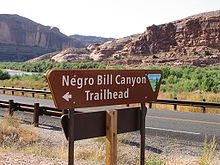 While most of the silly symbolism I’ve experienced is happening elsewhere, I faced one example close up and personal recently, when Moab citizens wrestled with the issue of Negro Bill Canyon. Despite opposition from Utah’s NAACP, white progressives demanded the change, insisting that “Negro Bill” was racist and driving tourists away. Ultimately, in this politically correct climate, supporters of the name change prevailed. Now it’s Grandstaff Canyon.
While most of the silly symbolism I’ve experienced is happening elsewhere, I faced one example close up and personal recently, when Moab citizens wrestled with the issue of Negro Bill Canyon. Despite opposition from Utah’s NAACP, white progressives demanded the change, insisting that “Negro Bill” was racist and driving tourists away. Ultimately, in this politically correct climate, supporters of the name change prevailed. Now it’s Grandstaff Canyon.
It was Moab’s “Green/Progressive” community, a group composed almost entirely of white, urban over 50 types, that pushed for a tourist-dominated economy and it has been wildly successful. But it also created the kind of structural racism that dominates “New West” communities like Moab. The “Negro Bill” debate may have become their latest cause celebre, but one would be hard pressed to find those same activists doing anything to honestly resolve the outrageous wealth disparity that their amenities economy has brought to town.
To find the true heart and soul of the issue, the problem goes beyond race—it’s about ‘institutional elitism,” the deliberate, planned creation of a culture and an economy that excludes everyone, of any race, who lacks the financial assets to be a part of the newly transformed community.
Yet progressive politicians continue to talk about affordable housing problems and low wage jobs as if they’re as shocked and dismayed as everyone else. And they display their “liberal” credentials, by diverting attention away from the real inequities in their “New Moab” community by ranting about a canyon called “Negro Bill.”
And so, by deleting “Negro Bill,” most of these sanctimonious name change partisans have absolved themselves of any responsibility for racial inequities in Moab. They pat each other and themselves in celebration of their latest good deed. It’s about as effective or meaningful as a Facebook “like.” But they honestly feel they’ve saved the town from its dark past.
On the day of John Kennedy’s funeral, Chief Justice Earl Warren delivered a eulogy to the assassinated president under the great dome of the Capitol. He said, “It seems the only thing we learn from history is that we do not learn.” But he added, almost with a tone of desperation, “But we must learn.”
We cannot learn from history if we don’t know it. Or confront it, with all its complexities and contradictions. Do we ban what we don’t know or understand and deny our own sins? Or can we concede that our most damnable flaws are lessons to be learned from? As humans, we inexplicably seem capable of representing our “better angels” and our worst, sometimes all at once. Our history is the best tool we have to improve our species and our world.
The philosopher George Santayana once warned, “Those who do not know history’s mistakes are doomed to repeat them.” Censoring our past is hardly the answer.
Jim Stiles is Founder and Co-Publisher of the Canyon Country Zephyr.

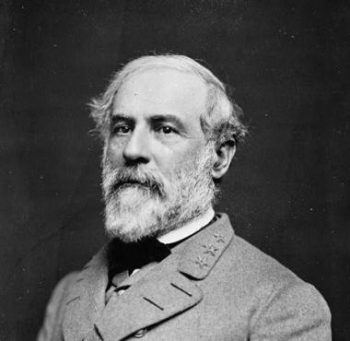

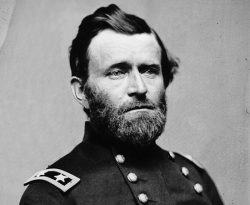
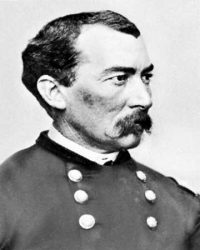


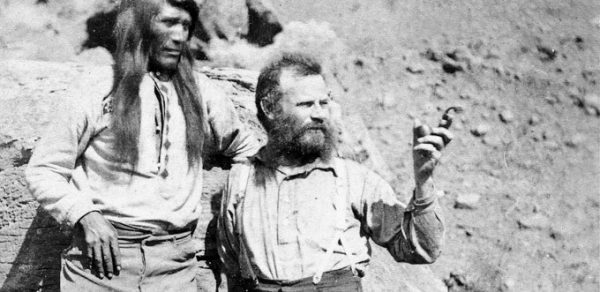
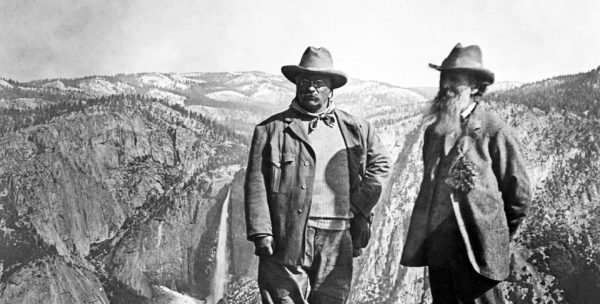
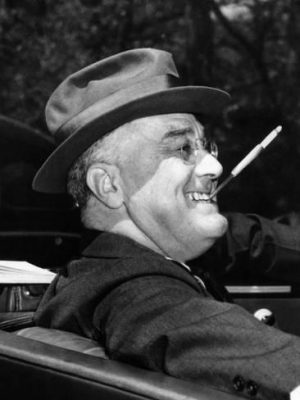
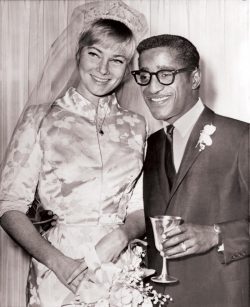





Having to be a polite society is taking a lot of character out of our culture.
Very well written Jim! I applaud you for having the courage to write about these subjects. While I’m sure you’ll be castigated for addressing this you are in my opinion “spot on”. Sadly though we are akin to standing in front of a steam roller as society in general continues it’s steady decline. Fasten your seatbelts and hold on for the ride!
Lots of false equivalencies here. Unlike many of the Confederate monuments in question, the canyon outside Moab wasn’t renamed in the Jim Crow era in order to intimidate African Americans. The NAACP recommended the name should be kept because it referred to a former resident of the area and was not meant to be demeaning. (And I agree the progressives who pushed for the renaming were misguided in this case.) But the rest of Stiles’ points are very problematic. We can and should condemn the racism of Lincoln and Muir, but we can also celebrate their achievements in the context of history. Lincoln freeing millions of slaves while harboring some racist perspectives is a far cry from Lee’s role in fighting to protect Southern slaveholders from having to emancipate their “property.”
Shrill, Stiles, very, very shrill. As mentioned above: lots of false equivalencies and straw man arguments. For you to whine about Americans’ lack of historical knowledge while leaving out huge chunks of context in this screed, demonstrates either ignorance or dishonesty on your part. Just because Ed was racist or that Wendell Berry is an apologist for rural Merican racism doesn’t mean you should engage in that behavior to.
It isn’t uncommon for those who own the present to destroy artifacts from those who previously owned it and whose lingering spirit continues to threaten the new owners. I think of Mao`s Cultural Revolution where anarchist mobs destroyed numerous ancient artifacts to purge Chinese history of its nonrevolutionary past.
More recently we have seen ISIS destroying artifacts to eliminate roadblocks to the emergence of the fabled Islamic State, their analogue of Zion. I suspect that few U.S liberals applauded their actions. I certainly did not. Was abhored.
In a remote valley in Afghanistan two huge statues of Buddha had been chiseled into the cliffs, Mount Rushmore style, and had stood for millenia. They threatened the Taliban, so were destroyed.
Borrowing a line from Indiana Jones, we pass through history; the artifacts we destroy are history. Our fads are a tiny part of a tapestry that is too large for us to see in total.
I’m with Jim here. On destroying these artifacts, we are imposing our narrow perspectives on a history much more complex than we allow.
Sounds to me like Jim’s critics don’t really understand his point, which is that nobody’s perfect and if you try to draw a line between the perfect and the flawed, you’ll be drawing lines into the next several millennia. Periodically we get people slamming Thomas Jefferson because he owned slaves and, for a host of reasons relevant to the historical period, did not free them upon his demise. But he also gave us and the world the idea that “All Men Are Created Equal”. Well, he wasn’t a feminist. Nonetheless, this idea keeps the American experiment charged: we are ever on the path to forming a more perfect union where all >people< are created equal. Jim would like us to understand the ironies of historicity. He doesn't want the statues torn down. He just wants us to know what they mean, what they're about. The name "Negro Bill Canyon" does just that. I've looked at the 1956 top maps. Yes, it was officially "Nigger Bill Canyon". Jim's critics can't even bring themselves to say the word. But that's what the wonderful local Moabites called Mr. Grandstaff in those days. And Jim would like us to remember, so that we don't do the same stupid shit in the future.